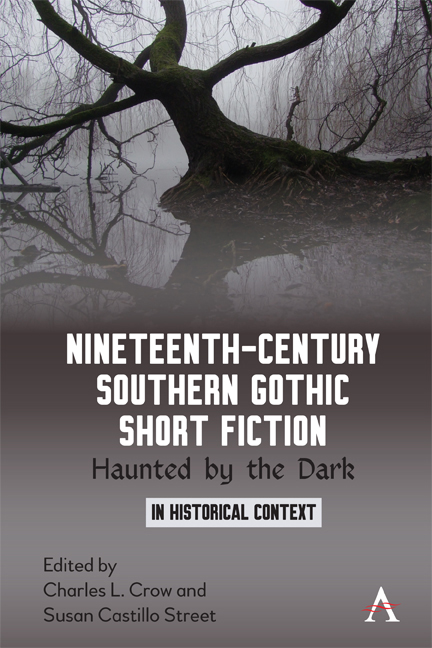Introduction
Published online by Cambridge University Press: 20 January 2022
Summary
The Gothic is a dark window into the fears and taboos of a culture. This collection brings together a dozen chilling tales of the nineteenth-century American South with nonfiction texts that illuminate them and ground them in their historical context. The tales are from writers with enduring, worldwide reputations (e.g., Edgar A. Poe), and others whose work will be unknown to most readers. Indeed, one of the stories has not been reprinted for over a hundred years, and little is known about its author, E. Levi Brown.
Similarly, the historical selections are from a range of authors, some canonical, others not, ranging from Thomas Jefferson and the great historian and sociologist W. E. B. Du Bois to the relatively obscure Leonora Sansay. Some of these historical readings are themselves as disturbingly Gothic as any of the tales. Indeed, the boundaries between fiction and nonfiction are tenuous in the Gothic South. It is our contention that Southern Gothic tales are essentially realistic fiction and, even at their most grotesque and haunting, are closely linked to the realities of southern life.
All Gothic writers disturb and sometimes delight us by evoking our fears. The Gothic is a literature of crossing borders, often forbidden borders: between consciousness and nightmare, known and unknown, civilization and savagery, the living and dead … and the list could be extended almost forever. Gothic confronts taboos and universal fears, but it also provides a chart of the fears of a particular culture, at a particular time.
In America, the great fears, taboos and boundaries often concern race. In Playing in the Dark Toni Morrison explores the issue of “Africanism” in American culture, by which she means the system of assumptions and fears that white Americans have used to define themselves and black Americans. This system pervades all aspects of American culture. Morrison uses the metaphor of the fishbowl: even though it is transparent and easily overlooked, it shapes and contains the life within. Morrison teaches us to be alert for black characters, often silent, on the margins of American stories. And they may be felt even when they are not physically present. No slaves appear in Poe's “The System of Doctor Tarr and Professor Fether,” for example, but the story gestures toward slave rebellion, the greatest fear of the Old South.
- Type
- Chapter
- Information
- Nineteenth-Century Southern Gothic Short FictionHaunted by the Dark, pp. 1 - 4Publisher: Anthem PressPrint publication year: 2020



